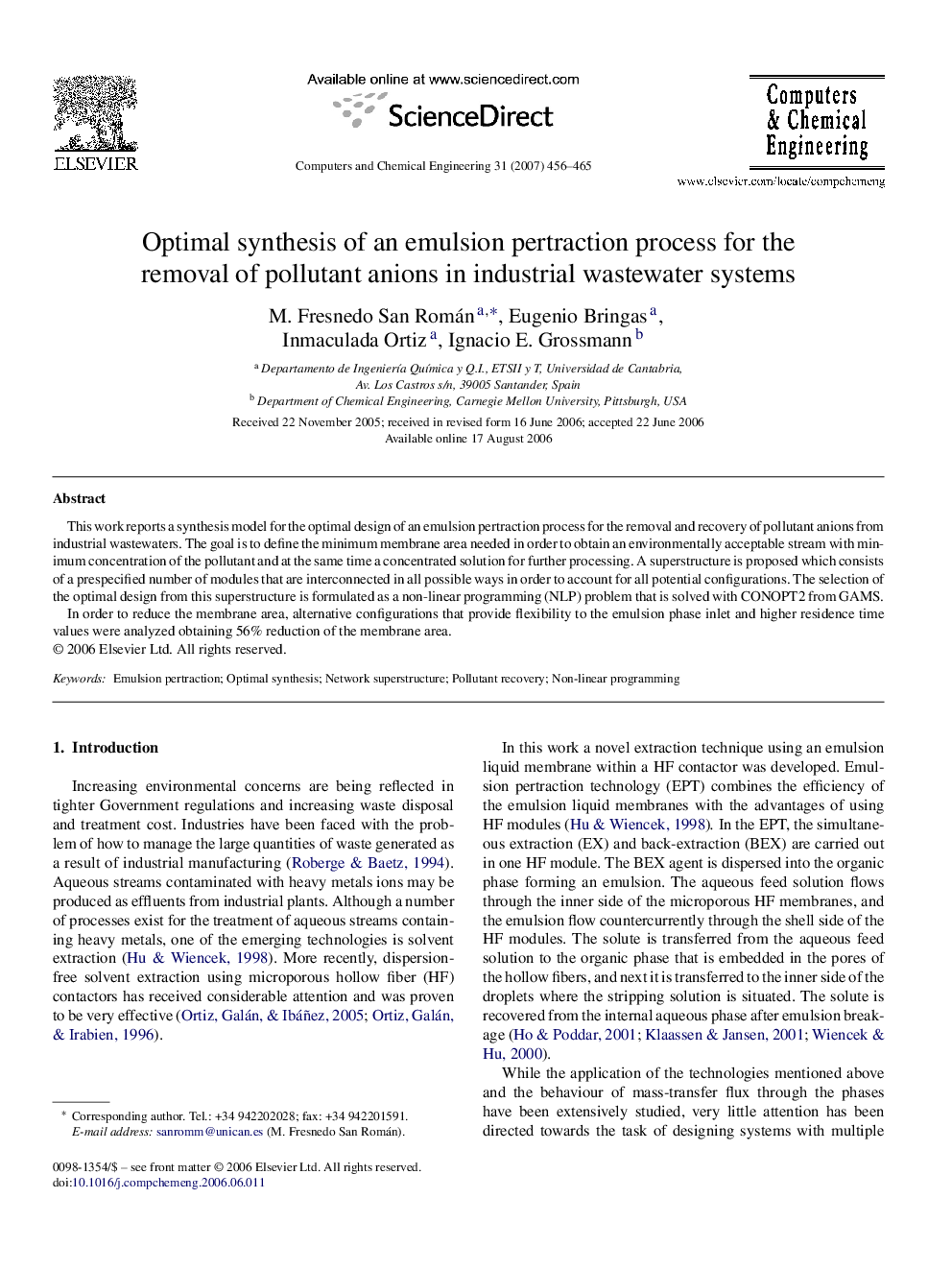| Article ID | Journal | Published Year | Pages | File Type |
|---|---|---|---|---|
| 173831 | Computers & Chemical Engineering | 2007 | 10 Pages |
This work reports a synthesis model for the optimal design of an emulsion pertraction process for the removal and recovery of pollutant anions from industrial wastewaters. The goal is to define the minimum membrane area needed in order to obtain an environmentally acceptable stream with minimum concentration of the pollutant and at the same time a concentrated solution for further processing. A superstructure is proposed which consists of a prespecified number of modules that are interconnected in all possible ways in order to account for all potential configurations. The selection of the optimal design from this superstructure is formulated as a non-linear programming (NLP) problem that is solved with CONOPT2 from GAMS.In order to reduce the membrane area, alternative configurations that provide flexibility to the emulsion phase inlet and higher residence time values were analyzed obtaining 56% reduction of the membrane area.
